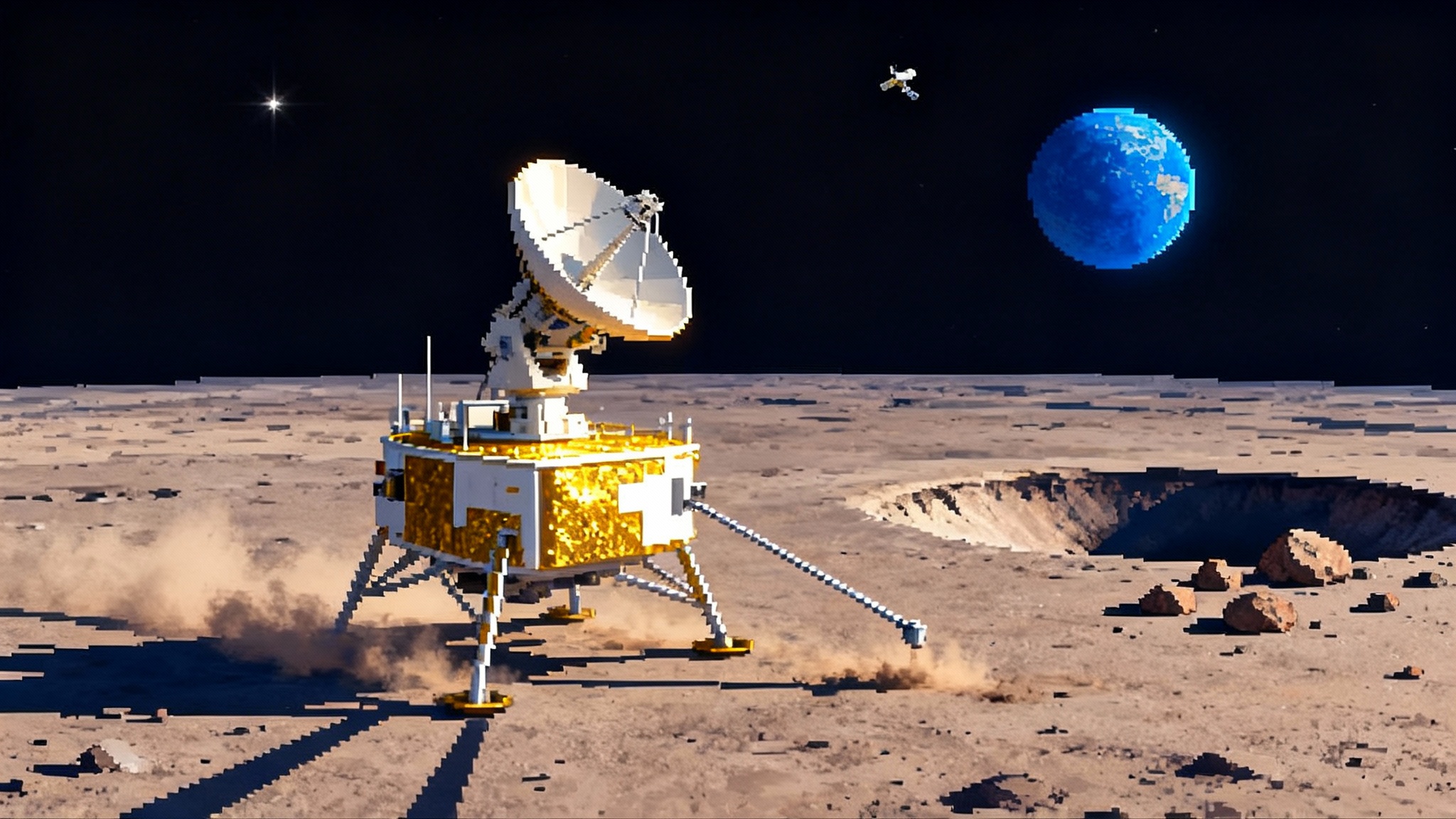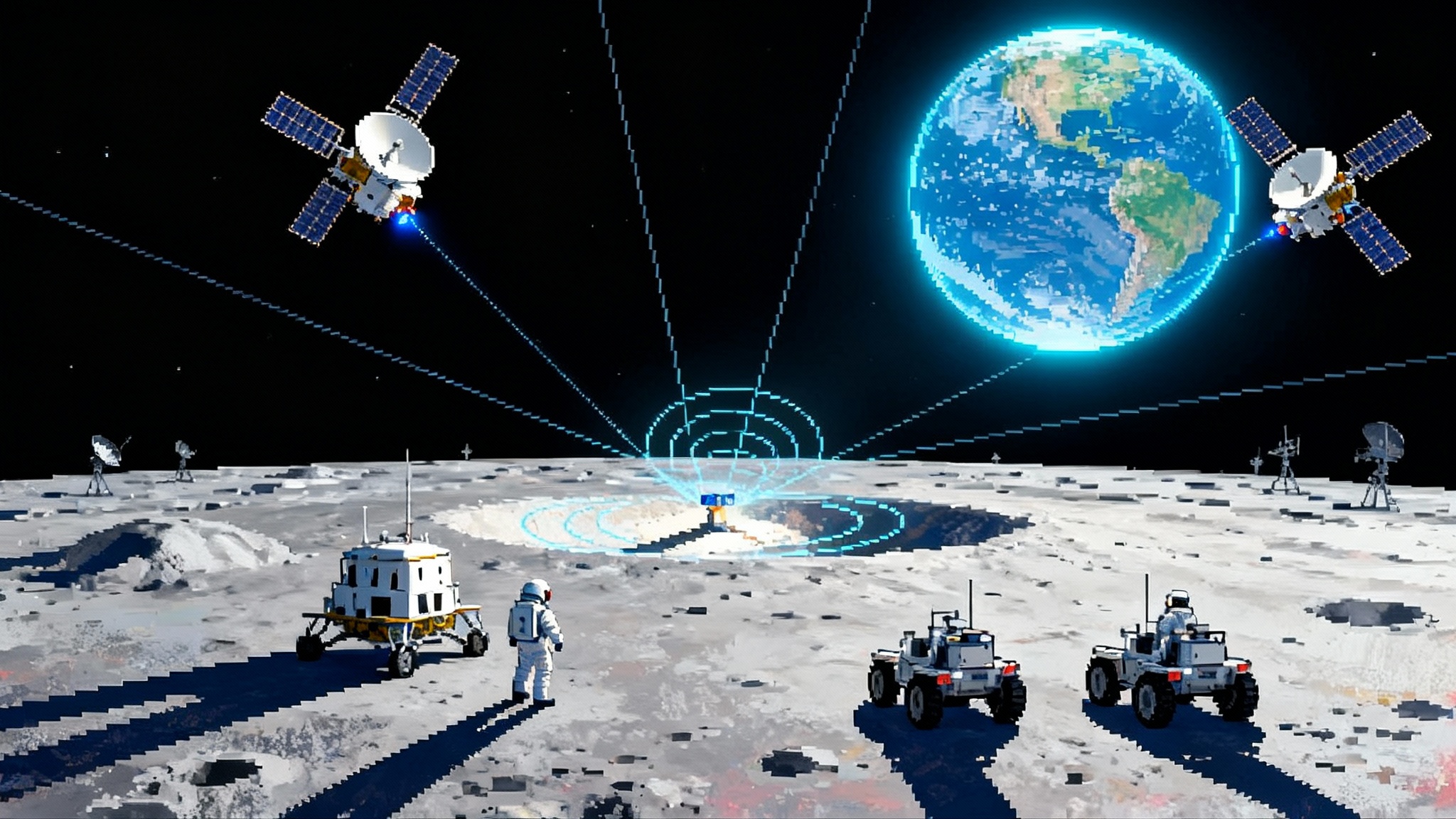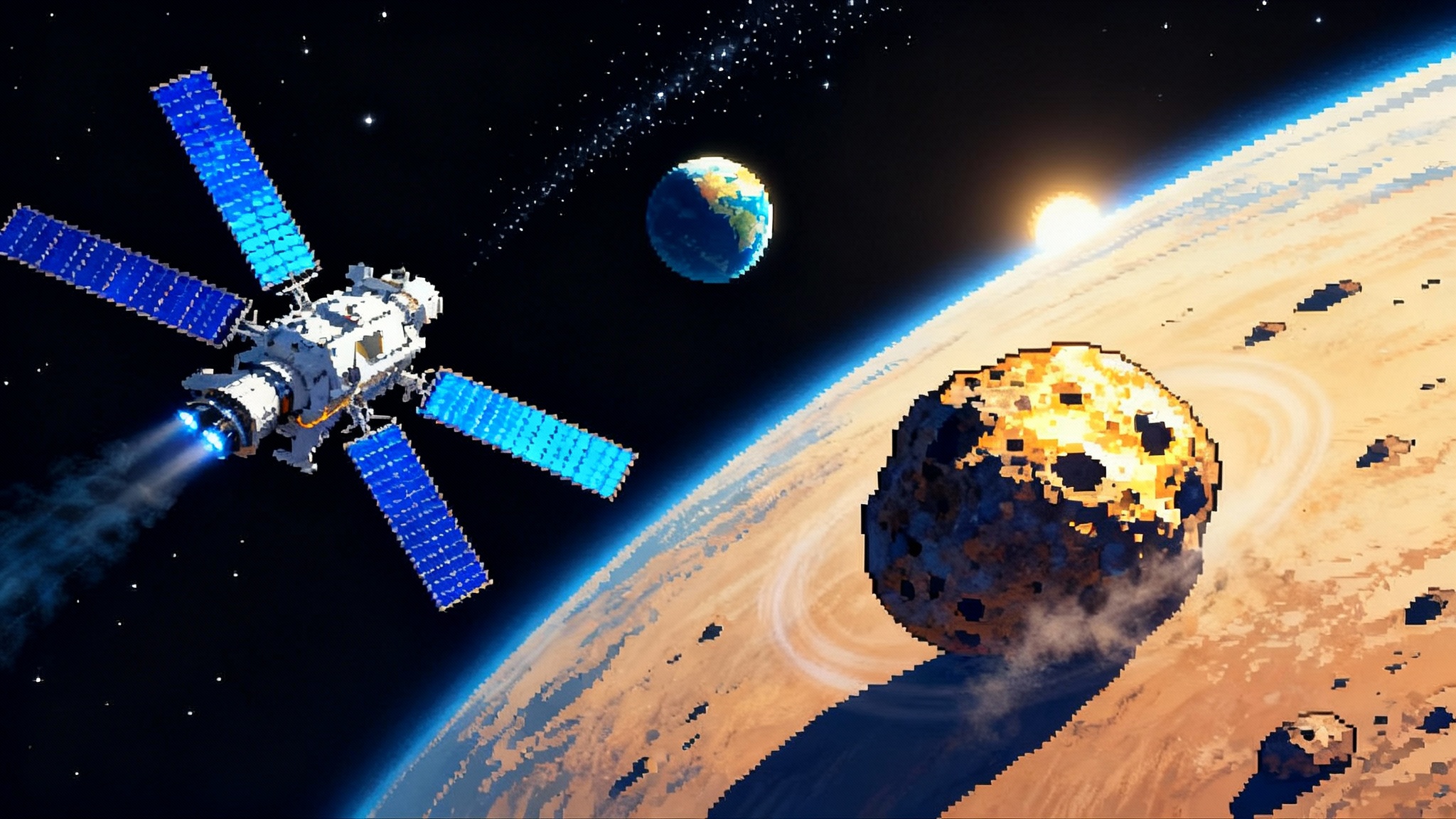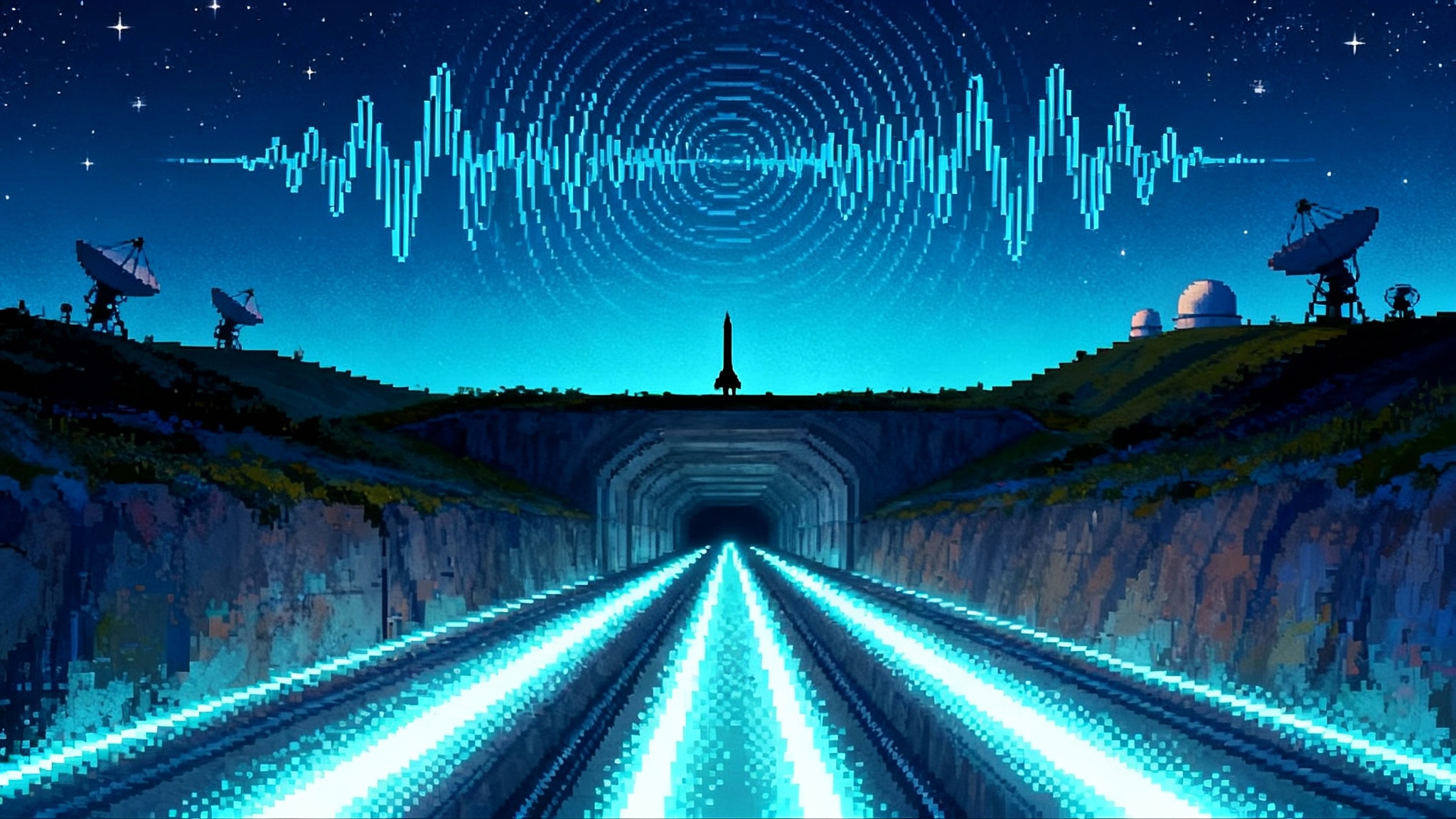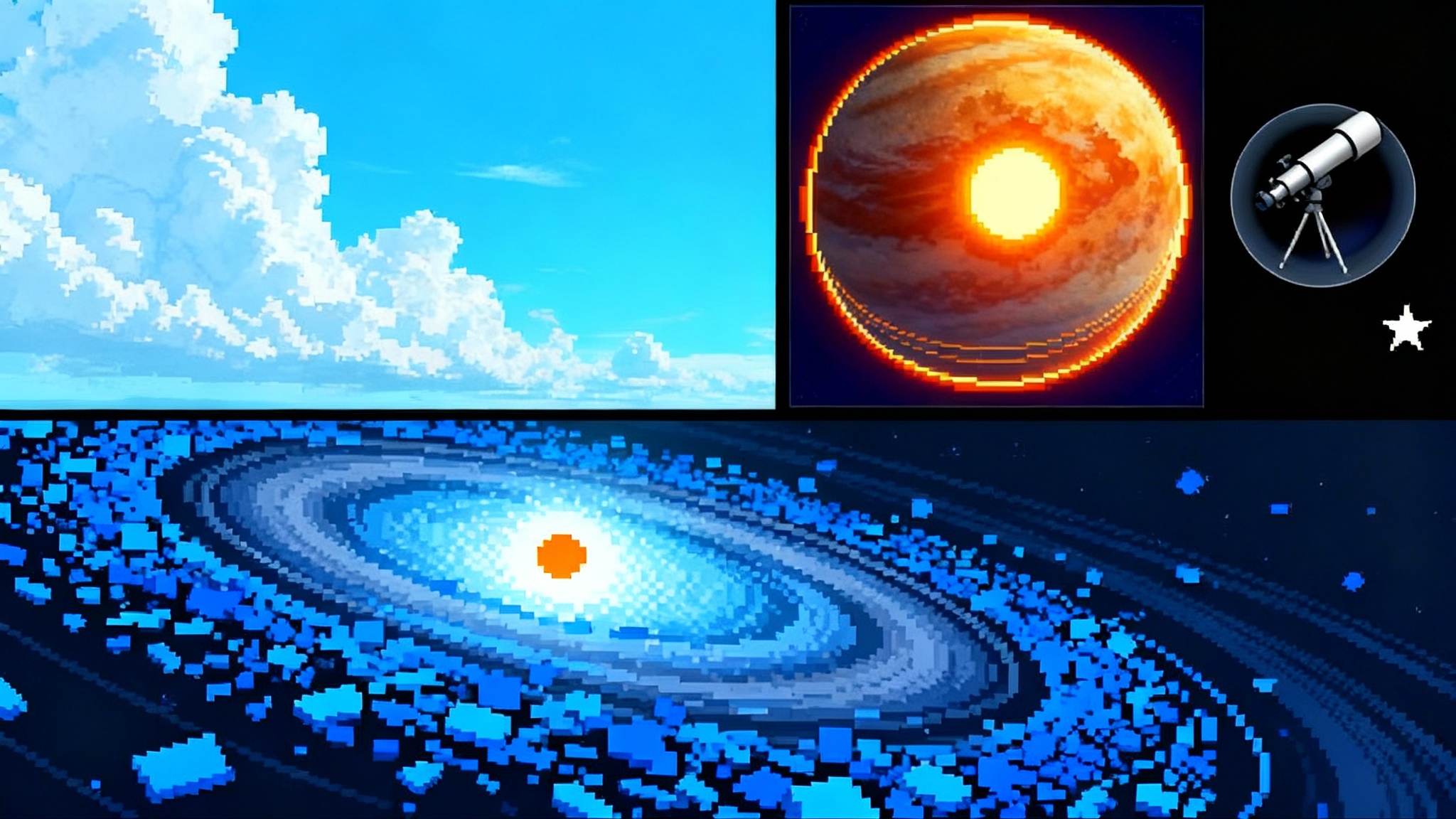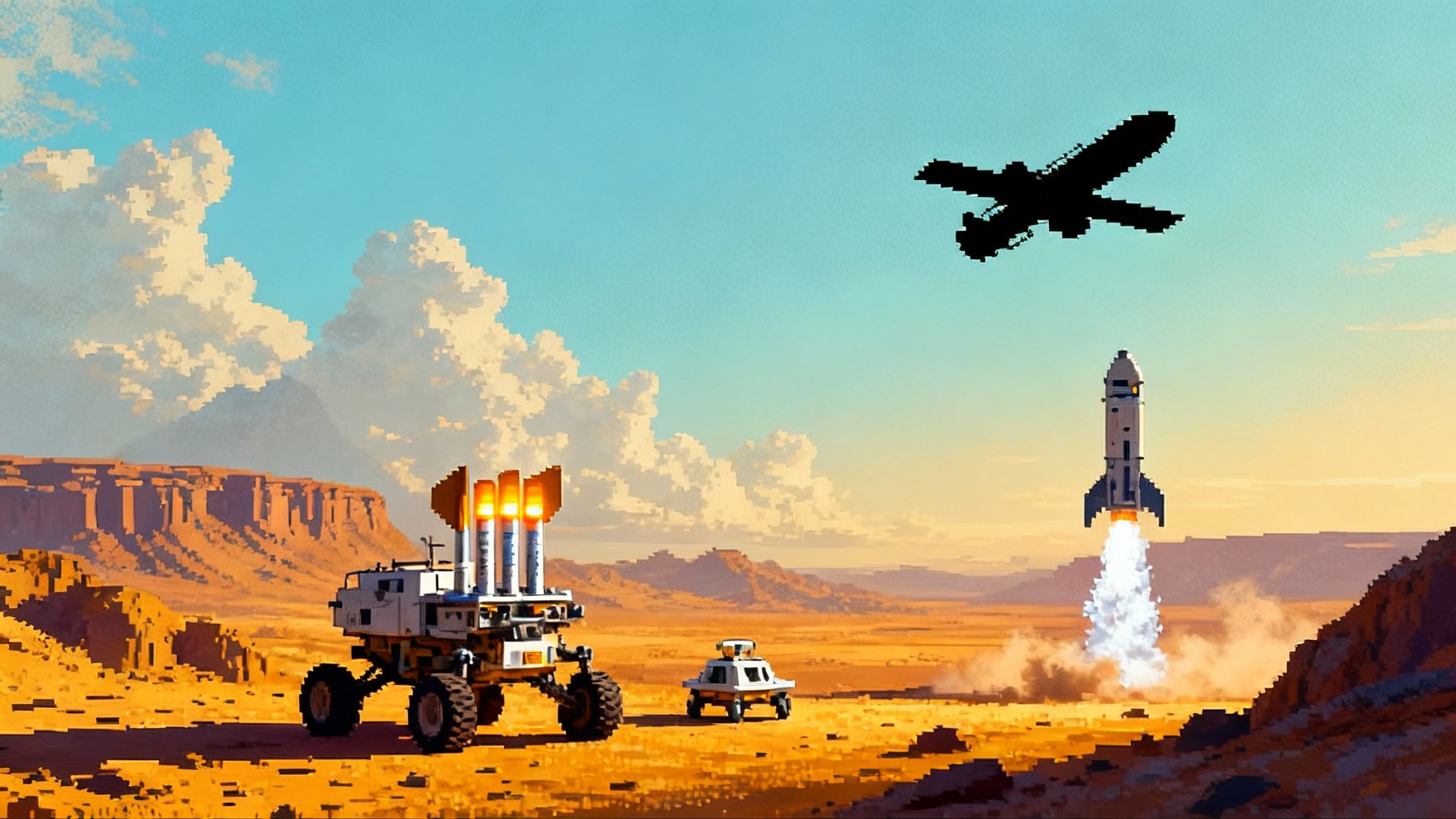Rubin’s First Images Switch On the Real-Time Sky Firehose
On June 23, 2025, Rubin Observatory’s first images flipped astronomy to real time. Next comes a decade of 20 TB nights, open alerts, and AI triage that will double near-Earth asteroids and catch cosmic explosions in their first hours.
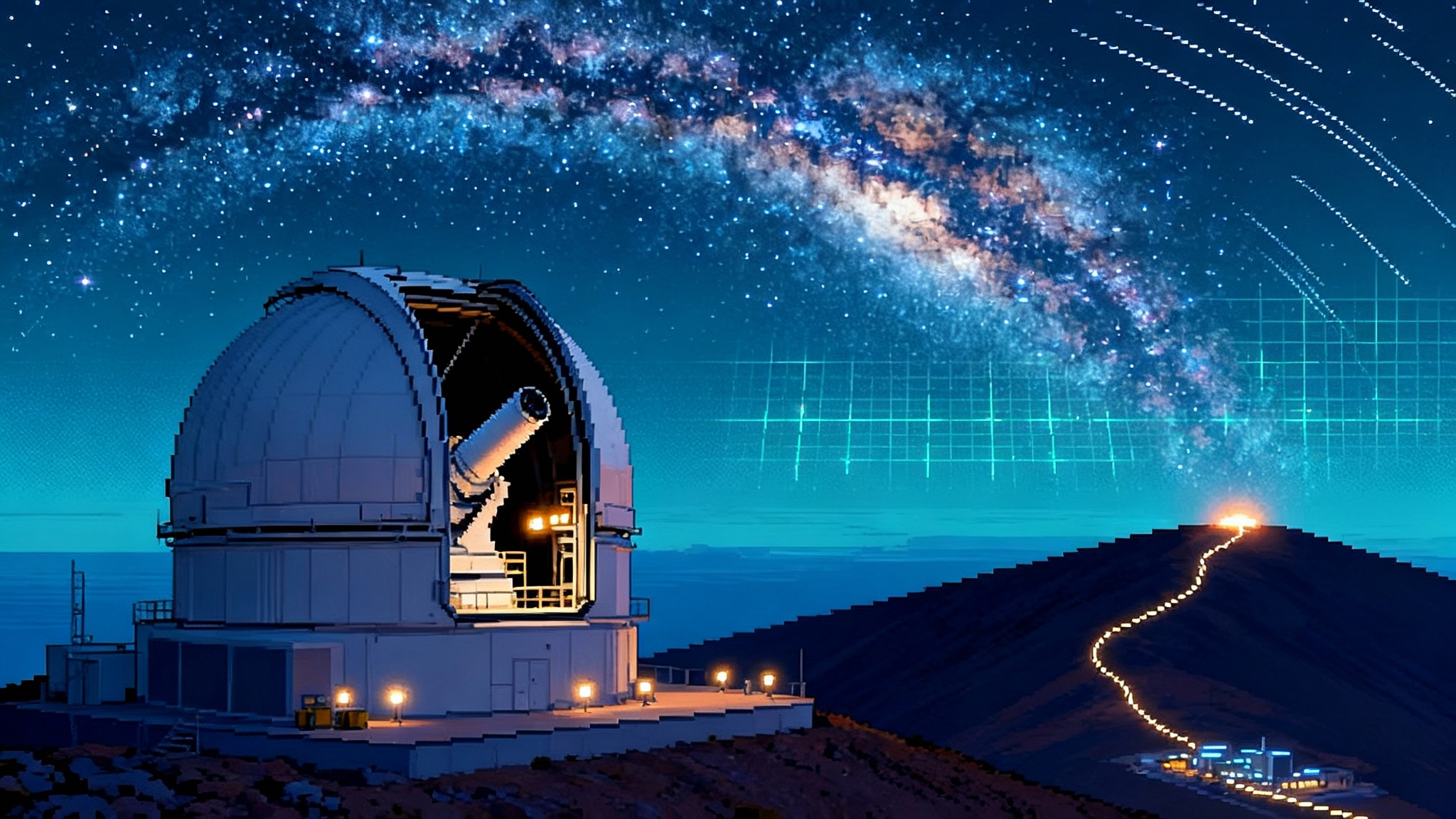
The night the universe started talking back
June 23, 2025 was not just a milestone for a new telescope. It was the night the sky switched from postcard to livestream. With its first look, the Vera C. Rubin Observatory proved that the Legacy Survey of Space and Time (LSST) would not merely take sharp pictures. It would turn the cosmos into a stream of time-stamped events, each one a ping from a changing universe. If the Hubble Space Telescope gave us an art gallery and the James Webb Space Telescope gives us a microscope, Rubin is a street camera system for the cosmos. It will watch almost everything that can be seen from its mountaintop in northern Chile, over and over, all night, every clear night, for ten years. For background, see the Rubin Observatory overview.
The promise is simple and audacious. Record the entire southern sky in motion and make every change discoverable in minutes.
What flips on next
Rubin is built for cadence. A typical visit to a patch of sky will use two back-to-back 15 second exposures. The field of view is wide enough to fit about 40 full moons. By repeating this pattern across the accessible sky and returning to each region frequently, the observatory will produce a nightly torrent of data on the order of 20 terabytes. Over the full survey, that adds up to hundreds of petabytes of images and catalogs.
The real breakthrough is not just size. It is speed. Within about a minute of each exposure landing on the summit, software in the prompt pipeline will extract sources, compare them to prior views, and detect what changed. The result is an alert packet that describes the change. A star brightened. A streak appeared and moved. A smudge shifted slightly between frames. Millions of these alerts will be created on a typical night, each one a starting point for science.
This is the end of the idea that astronomers primarily pull images from an archive. With Rubin, you subscribe. The sky publishes. Your tools decide what to do.
The discovery firehose, not a static map
Space telescopes like Euclid and James Webb are exquisite surveyors and inspectors. Euclid maps the geometry of the cosmos with stunning uniformity, building a reference atlas of galaxies and dark matter, as covered in our piece on Euclid’s first map shifts galaxy physics. James Webb peers deep into specific targets, from infant galaxies to nascent planetary systems, an arc we explored in Webb’s 2025 exoplanet turn.
Rubin fills a different role. It is the discovery engine that sweeps, flags, and forwards. Think of the ecosystem as a newsroom. Euclid is the graphics desk that crafts the definitive map. James Webb is the investigative reporter who digs into a single story for weeks. Rubin is the police scanner. It hears the sirens, posts the incident, and routes the lead to whatever team needs to move.
Planetary defense gets a daily upgrade
Near-Earth asteroids are loud in Rubin’s language. They move. They repeat. They reveal themselves across multiple nights as they trace short arcs against the background of stars. Rubin’s moving object pipeline will link those arcs into orbits and report them quickly to the small-body community.
Within the first few years of operations, Rubin is on track to roughly double the number of cataloged near-Earth asteroids, especially in the size range that concerns hazard assessments. That means fewer blind spots and faster follow-up when a new object shows up on an unusual trajectory.
Expect dedicated twilight scans to help with objects that lurk near the Sun in our sky. Ground-based Rubin will work in tandem with radar facilities and future infrared space missions to tighten orbits and refine size estimates. The practical effect is a weekly and sometimes daily improvement in the global picture of what is out there and how it moves.
Catching the first hours of cosmic explosions
Supernovae and kilonovae do not send calendar invites. They happen, they evolve quickly, and they fade. By revisiting vast swaths of the sky every few nights and sometimes faster, Rubin will catch these explosions in their first hours or days. That early light encodes the physics that models crave. The mass of the exploding star, the composition of the debris, even hints of the companion star can be teased out when the time series starts early.
The same logic applies to tidal disruption events and to flare stars in our own galaxy that can threaten the atmospheres of their planets. Early detection is the difference between a sparse set of dots and a richly sampled curve. For the multi-messenger context, see our Gravitational Waves 2025 outlook.
From images to alerts to action
Rubin’s nightly workflow runs like a finely tuned logistics hub. Light hits the 8.4-meter mirror, the 3.2-gigapixel camera measures it, and a fiber link sends the raw data off the mountain. Prompt processing extracts sources and compares them to a baseline built from prior nights. Where a difference exceeds a threshold, an alert is formed. Each alert includes cutout images, measured features, and pointers to prior observations. For a technical primer, start with Rubin’s prompt processing and alert stream.
Then comes the crucial hop. The alert stream is open by design. Community brokers ingest it, enrich it, and distribute specialized feeds. Some brokers will score alerts by how likely they are to be a supernova, a variable star, or a moving object. Others will crossmatch against external catalogs like Gaia and Pan-STARRS. Names already familiar in the pathfinder era will expand to Rubin scale. Expect brokers such as ALeRCE, ANTARES, Fink, and Lasair to become household names within the community. Each will differentiate on models, speed, and tooling. The competitive edge will come from human-centered design as much as from algorithms. A researcher juggling a dozen targets at 3 a.m. needs triage tools that are both accurate and explainable.
The 2026 cadence, by the clock
Commissioning continues through 2025 into early 2026, with science operations ramping over the year. Here is how a mature night in 2026 is likely to feel.
- Visits and filters. Most visits use two 15 second exposures to guard against cosmic rays and to help confirm real changes. The survey toggles between filters to build color information on a cadence that balances transient science, solar system discovery, and cosmology. Nights will often emphasize the r and i bands, with regular g visits and periodic dives into z and y.
- Sky coverage. The scheduler watches the weather and moves the telescope to maximize useful coverage. The goal is to revisit most fields every three to four nights, with special programs requesting higher frequency in selected regions.
- Alert timing. The aim is alerts within about a minute of shutter close. Latency parity will matter. Brokers that shave seconds will become the default choice for fast transients and moving objects.
- Twilight modes. Short exposures near dusk and dawn add sensitivity to interior-orbit asteroids. These visits trade depth for geometry and pay off in objects that other surveys miss.
- Rolling strategy. To boost cosmology goals, the survey can concentrate on a band of the sky for a season, then roll to a new band. Transient science benefits because higher cadence in the active band means more early detections.
For observatories planning follow-up, translate those bullets into staffing and hardware. If your instrument needs 10 minutes to slew and expose, build a queue that can swallow two dozen plausible targets per night because that is what your broker feed will supply. If your instrument can execute in two minutes, plan for hundreds of candidates and automate your acceptance rules.
The new stack you will need
Rubin is a data product as much as a telescope. To ride its wave, build a stack that treats the alert stream as your real-time bus and the data releases as your ground truth. Here is a concrete blueprint.
- Stream ingestion. Use a managed streaming service that can ingest millions of small messages per hour without loss. Structure your topics by science case. Keep raw alerts for at least a week to allow for reprocessing when a model update lands.
- Machine learning at the edge. Run first-pass classification as close to ingestion as possible. Real versus bogus classifiers thin the herd. Next-layer models score each alert for specific hypotheses. Include uncertainty estimates and expose the features that drove each score.
- Crossmatch services. Cache key external catalogs locally and build fast spatial indices. A 100 millisecond crossmatch saves hours down the line. Track provenance and know which past alerts need reprocessing when a catalog updates.
- Human-in-the-loop tools. Think cockpit, not dashboard. Flight-strip views for nightly operations. Triage queues with just enough context to make a decision. One-click handoff to robotic telescopes. A later tab for reflection and labeling. The labels feed back to model retraining.
- Storage that respects time. Keep the last week in a hot store optimized for rapid random reads. Keep a month in warm object storage. Push older material to cold storage but retain fast indices that let you jump directly to a relevant time slice.
- Notebook-ready data releases. The annual releases will bundle deep coadds and value-added catalogs. Provide teammate-friendly entry points that mirror the Rubin Science Platform experience. Productivity is the goal.
- Observability and simulation. Treat your broker as production software. Metrics, alerts, chaos drills. Invest in simulation. Generate synthetic alert streams that match Rubin statistics to test your pipeline at scale before the real flood arrives.
Citizen science grows into a training set
The discovery flood needs human pattern recognition. That is not a bug. It is an opportunity. Well-designed citizen science projects can label artifacts, identify rare morphologies, and surface needles that models have not been trained to find. The trick is to feed that human labor back into your models quickly.
Build a loop where volunteer labels update training sets monthly. Reward contributors by showing the effect of their work. A volunteer who can see that their classifications improved the supernova purity of your nightly list by a few percent will return tomorrow with friends. Expect classrooms to join in. Rubin turns time into a dimension students can touch.
Startups and the new supply chain
Rubin creates a market for tools that did not quite make sense before. The addressable problems are crisp.
- Alert infrastructure. Managed brokers for universities that do not want to run their own. Latency service level agreements. Compliance with community schemas.
- Portfolio managers for telescopes. If the alert stream is the market, your instrument time is the capital. Build software that allocates that capital in real time under a set of science policies.
- Cross-facility orchestration. Many discoveries will need rapid spectroscopy or high-cadence photometry. Build coordination layers that handle matchmaking, data rights, and standardized returns.
- Model marketplaces. Share models like you share code. Provide benchmarks on common alert sets, versioning, and push-button deployment into major brokers.
- Compliance and safety. Planetary defense has real-world implications. Offer audit trails, reproducible pipelines, and reporting that meets international standards.
How to prepare between now and the 2026 ramp
- Decide what you will ignore. You cannot chase every alert. Write down the classes you care about and the thresholds that define action.
- Pick two brokers and integrate deeply. Redundancy protects you from outages and from your own blind spots. Use one for speed, one for depth.
- Automate the boring parts. If a human does the same click three nights in a row, remove that click. Reserve attention for edge cases and rare events.
- Budget for storage and egress. The alerts are small. The follow-up you trigger is not. Plan for bursts when a bright nearby supernova or an unusual near-Earth object hits the feed.
- Build reciprocal agreements. Offer follow-up time to another team in exchange for priority on their specialty events.
What success will look like by late 2026
- The near-Earth asteroid catalog shifts from sporadic jumps to a steady climb. A typical week includes new candidates, orbit confirmations, and hazard scores that refine quickly.
- The supernova community moves from luck to logistics. Early-time photometry becomes routine. The first hours are a service, not a miracle.
- Brokers stabilize and specialize. The top tier handle millions of alerts per hour without loss. Research teams adopt playbooks and treat the sky like a set of channels.
- Citizen science produces measurable gains. Rare classes are found sooner. Model bias is tracked and reduced with public help.
- Startups grow into infrastructure. The tools that felt experimental in 2025 become the rails that everyone uses.
The deeper implication
Rubin drags astronomy into the present tense. That has cultural effects. Credit flows to teams that build pipelines as well as to teams that push the shutter. Papers gain methods sections that look like production runbooks. Young astronomers bring software habits from industry and teach senior colleagues without apology. The field becomes more fluent in uncertainty, because a million nightly alerts makes probability feel normal rather than academic.
A decade from now, the most important thing Rubin will have produced might not be a single discovery. It will be a habit of attention. The sky will have become a place we check. Not casually. Not doomscrolling. Purposefully. We will have built a shared ability to see change when it happens, to route it to the right hands, and to learn from it before it fades.
That habit starts with a first look. On June 23, 2025, the universe waved. In 2026, it will start talking in full sentences. Our job is to listen well and to build the tools that help everyone hear.

